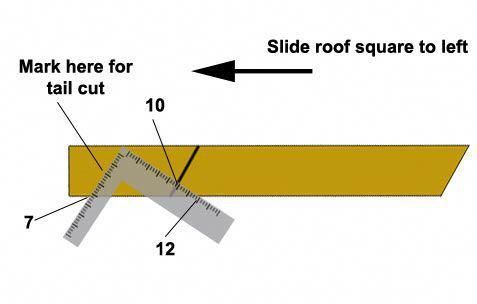As a matter of fact finding the pitch of a roof was the motivating factor for how this tool was invented in the first place hence it s official name the rafter square.
How to find the pitch of a roof using a speed square.
Because of its compact size it is frequently used as a saw guide when cutting framing members as well as a layout tool for quick 45 and 90 degree cuts.
To find the pitch just place the pivot point against the shingles.
Express roof pitch as the ratio of the amount of the vertical rise of a roof or rise over the corresponding horizontal distance or run you write the pitch assuming a run of 12 inches thus the ratio would describe how much a roof rises for each foot of the run.
Using a speed square as a try square the 90 degree right angle leading out from the pivot and the lip makes quickly and accurately finding right angles a no brainer.
A speed square and level can be used to easily find the pitch of a roof.
A 6 inch rise per foot.
With a torpedo level and a speed square you can pretty accurately gauge the pitch of any roof with a gable end photo 1.
The pitch tells you the amount of vertical rise in inches for every 12 in.
As aforementioned there is no standard pitch of a roof.
Find the unit rise say inches per foot of the roof on the top line in the framing square rafter table e g.
Finding the pitch of a roof is simple with a speed square.
Set the level on the edge of the speed square as shown below then place the heel of the speed square on a rafter or gable edge of the roof.
The triangle shaped square was invented in 1925 by albert swanson to provide a quick accurate method for marking rafters.















































